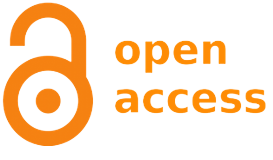<b>Diet analysis of <em>Cricotopus</em> sp. larvae (Diptera: Chironomidae), fourth stage, in different artificial substrates and hydrological phases, in the upper Paraná river</b> - DOI: 10.4025/actascibiolsci.v31i4.3522
Keywords:
Paraná river, food items, hydrological regime, detritus, diatoma
Abstract
In Brazil, studies on the diet of Chironomidae larvae are still scarce and these data are important to understand the trophic structure and organization of aquatic ecosystems. In this study, we identified the main food items consumed by Cricotopus sp. and compared possible differences in the larval diet at different artificial substrates and hydrological phases. We used four types of artificial substrates: X-shaped wood (MADX); X-shaped nitacetal plates (NITX); tube-shaped PVC (PVCT) and tube-shaped galvanized metal (METT), each with three replicates. Samplings were undertaken fortnightly, between August 2004 and December 2005. Cricotopus sp. diet was composed by detritus, algae and fungal hyphae. Detritus was the main food item, with values above 50% of total intake. The results indicated that Cricotopus sp. is a collector species and, regardless of substrate, these larvae feed on available resources in the environment. However, the changes in hydrological regime of the Paraná river can influence the food resource availability, mainly some Diatoma genera such as Melosira sp., which were consumed in high quantity only during the low water phaseDownloads
Download data is not yet available.
Published
2009-08-20
How to Cite
Anjos, A. F. dos, & Takeda, A. M. (2009). <b>Diet analysis of <em>Cricotopus</em> sp. larvae (Diptera: Chironomidae), fourth stage, in different artificial substrates and hydrological phases, in the upper Paraná river</b> - DOI: 10.4025/actascibiolsci.v31i4.3522. Acta Scientiarum. Biological Sciences, 31(4), 371-377. https://doi.org/10.4025/actascibiolsci.v31i4.3522
Issue
Section
Ecology and Limnology
DECLARATION OF ORIGINALITY AND COPYRIGHTS
I Declare that current article is original and has not been submitted for publication, in part or in whole, to any other national or international journal.
The copyrights belong exclusively to the authors. Published content is licensed under Creative Commons Attribution 4.0 (CC BY 4.0) guidelines, which allows sharing (copy and distribution of the material in any medium or format) and adaptation (remix, transform, and build upon the material) for any purpose, even commercially, under the terms of attribution.
Read this link for further information on how to use CC BY 4.0 properly.
0.6
2019CiteScore
31st percentile
Powered by 

0.6
2019CiteScore
31st percentile
Powered by 











1.png)




3.png)













